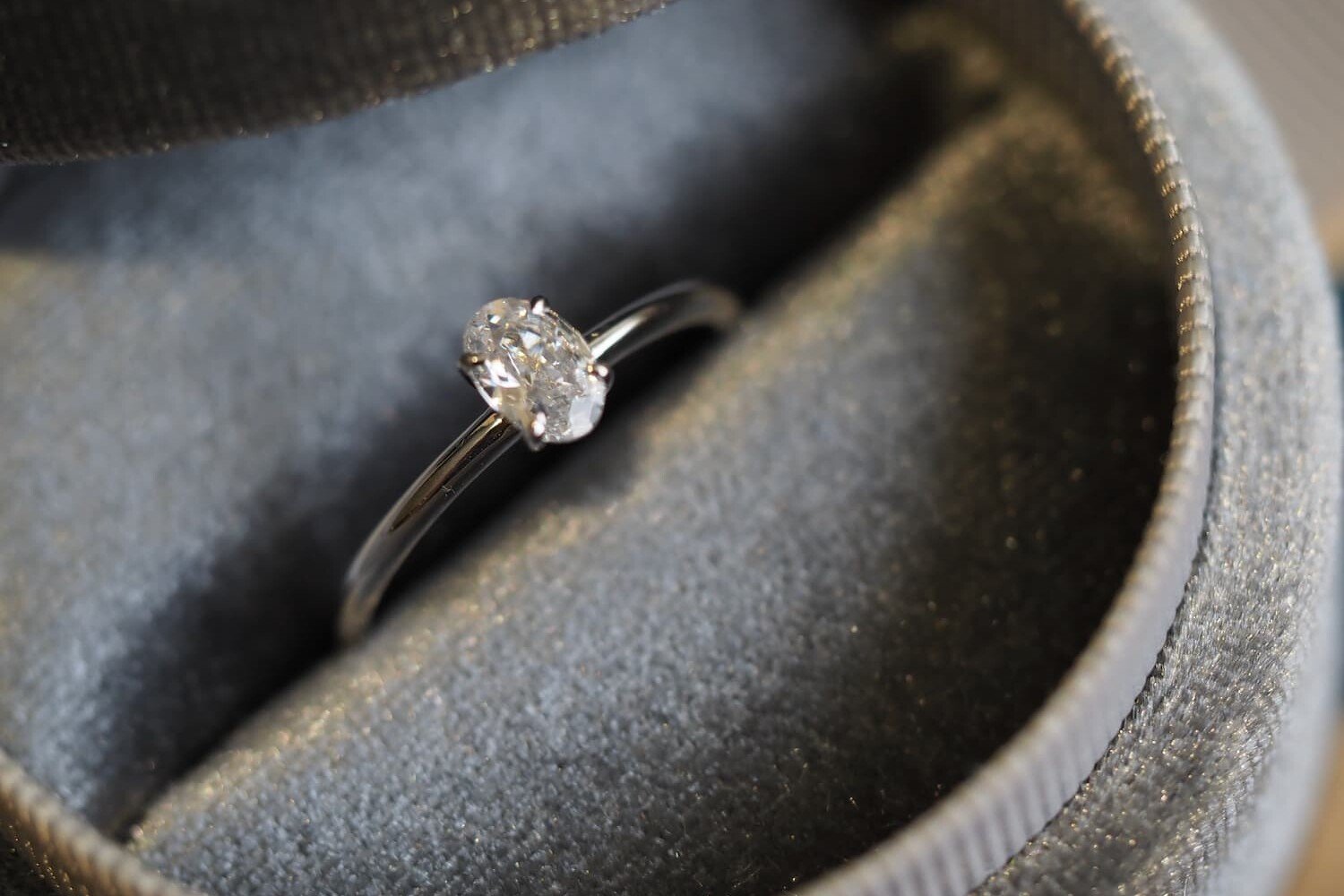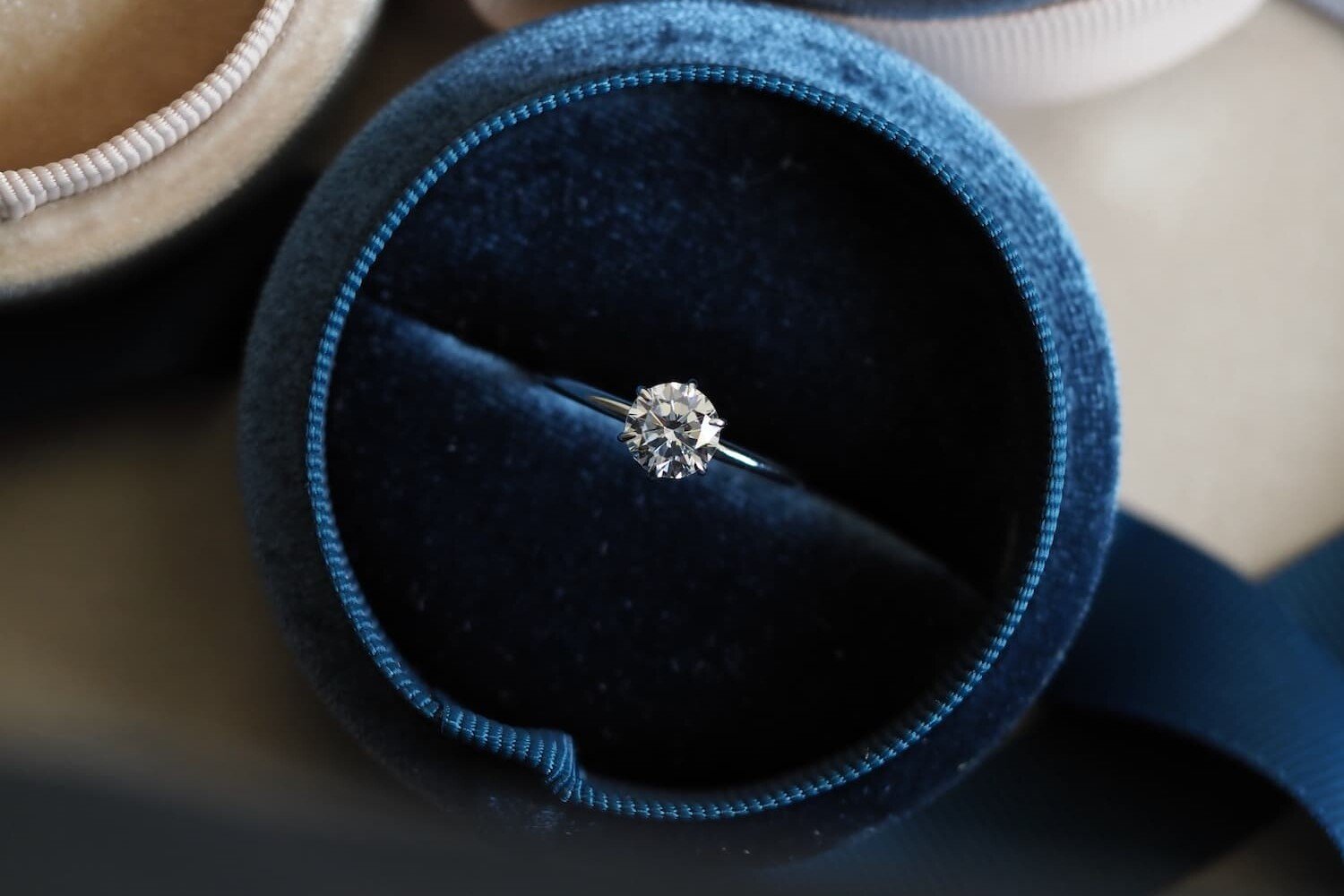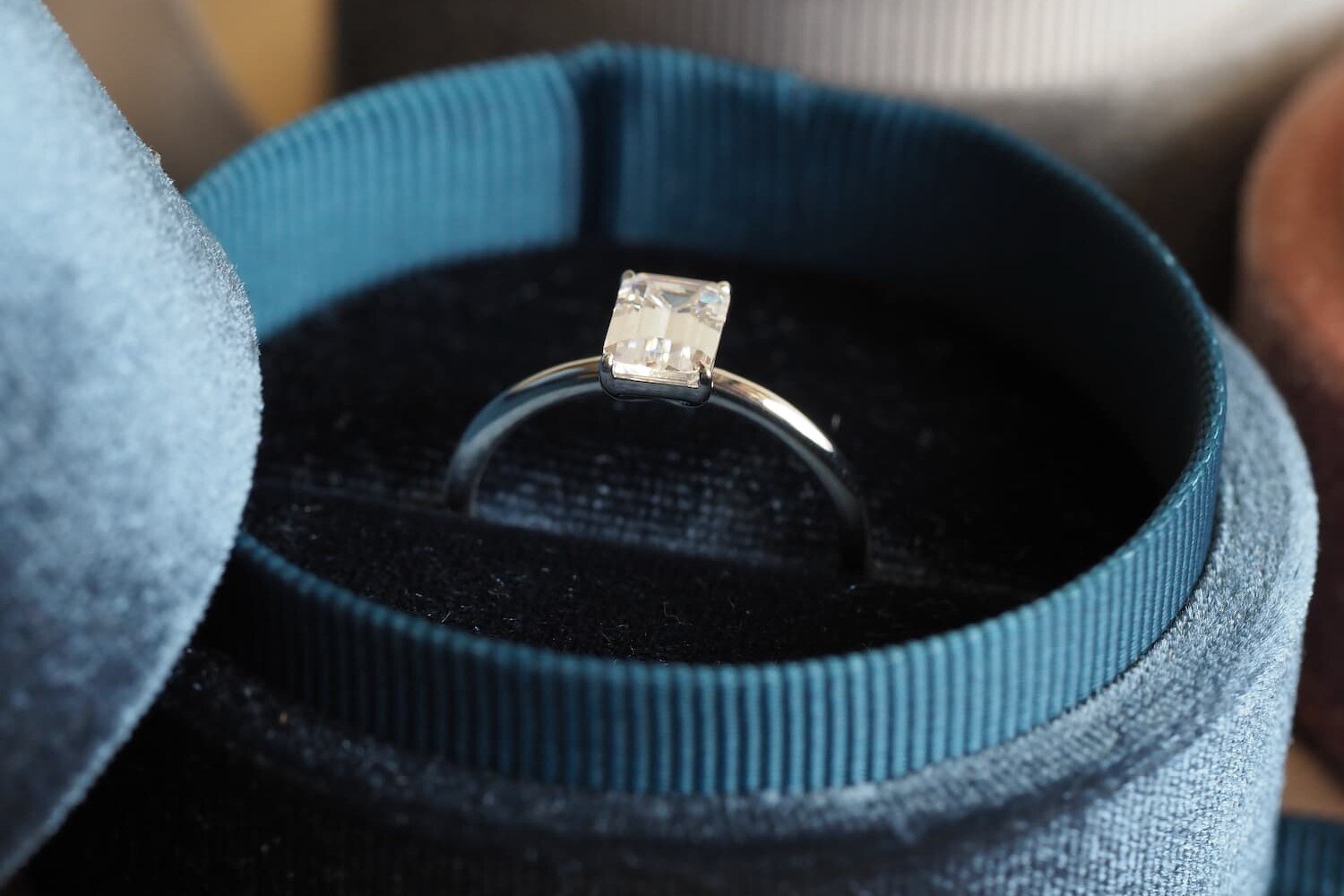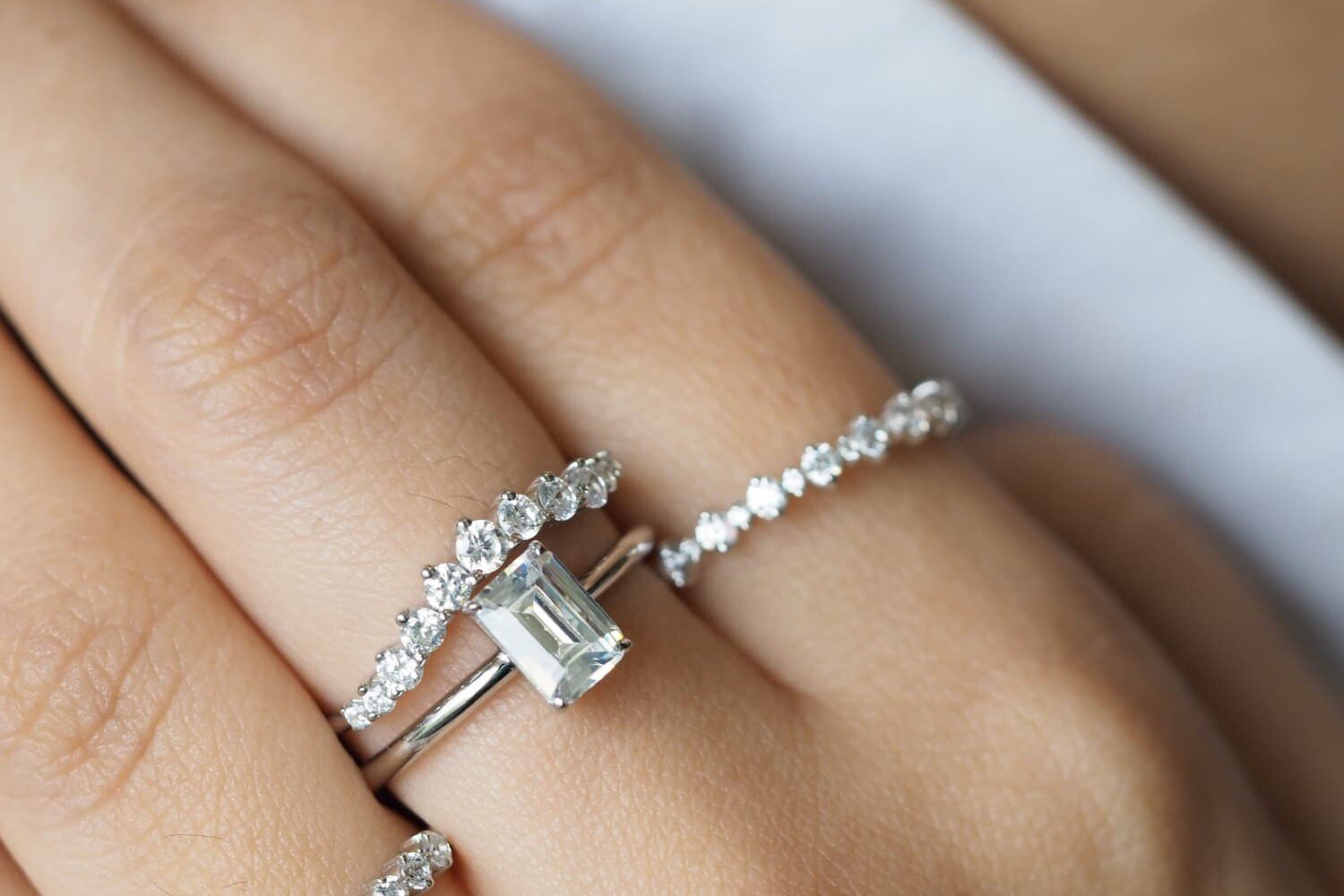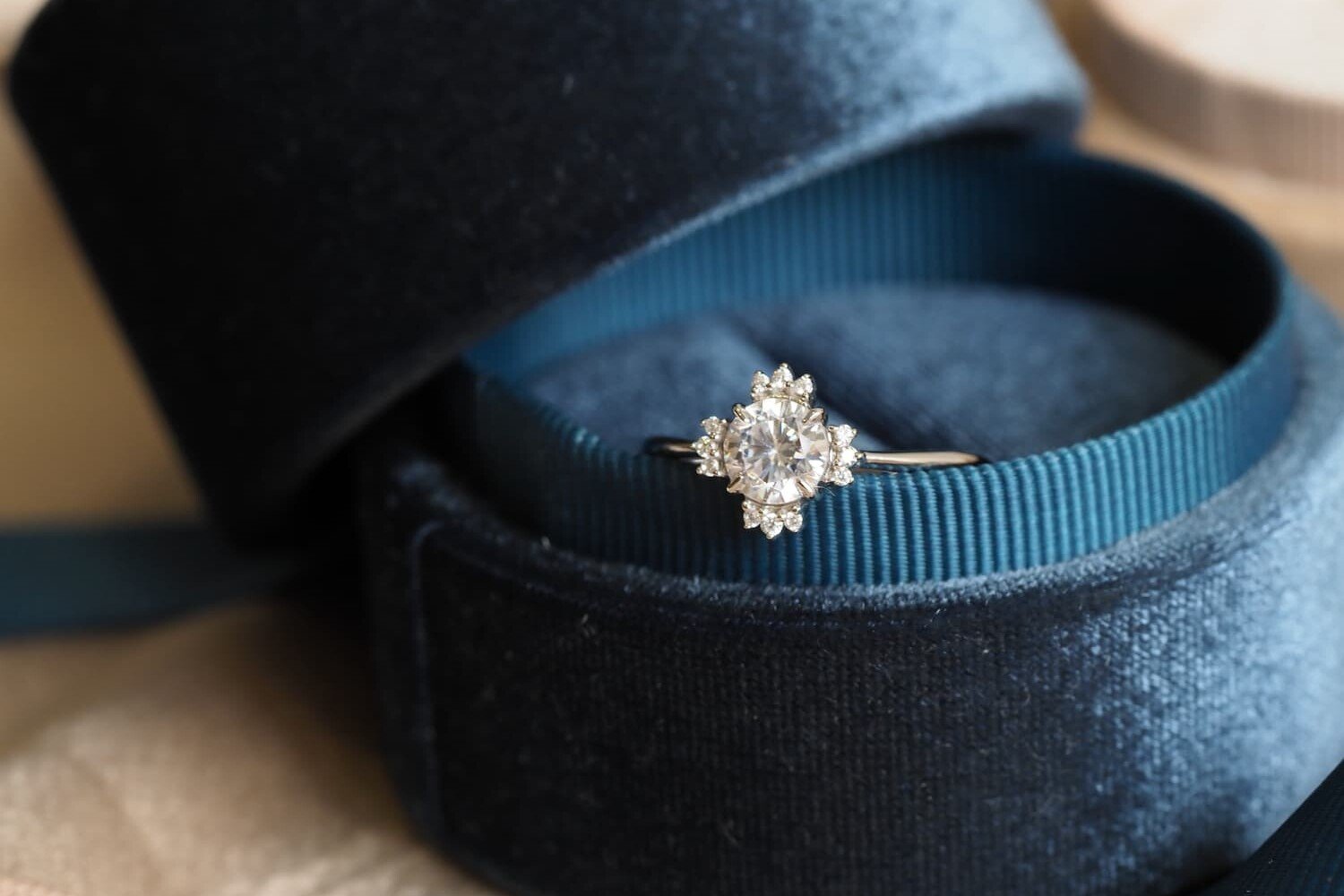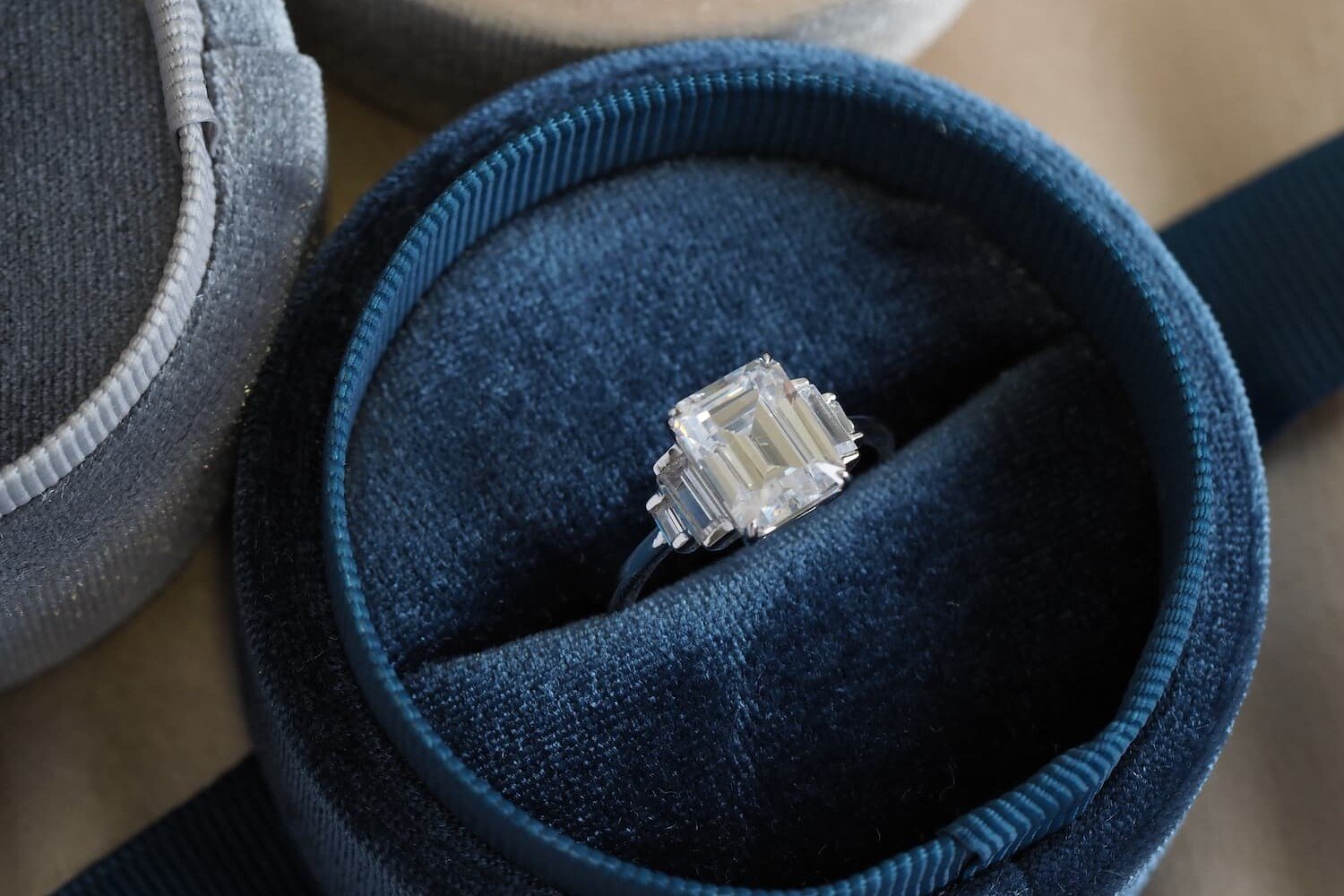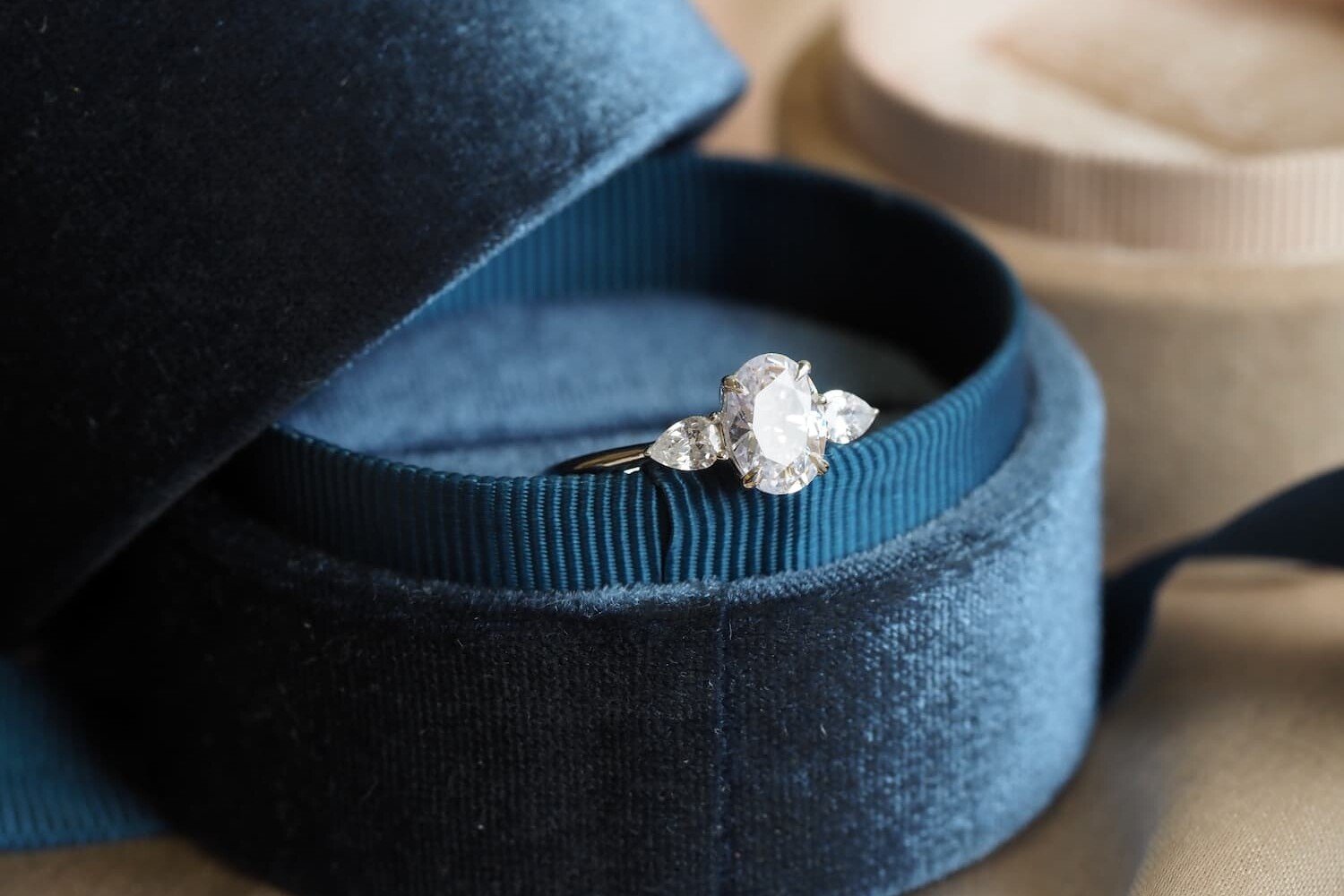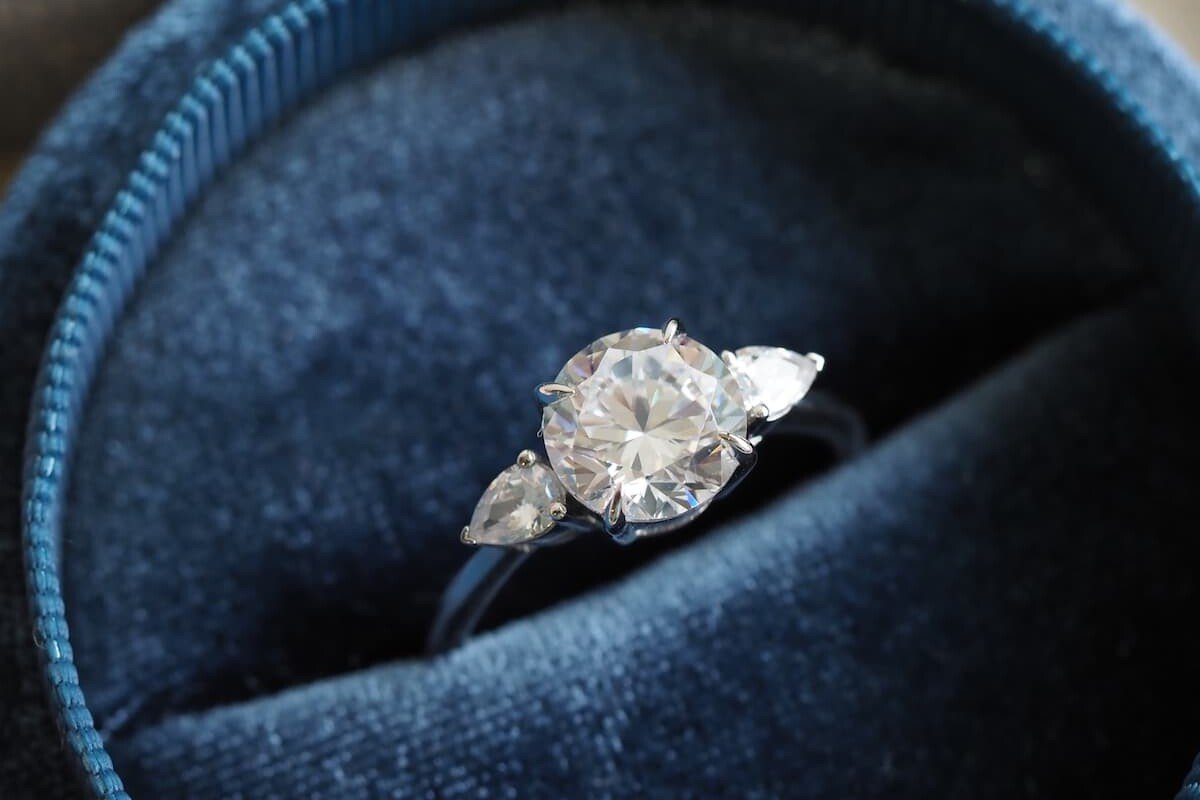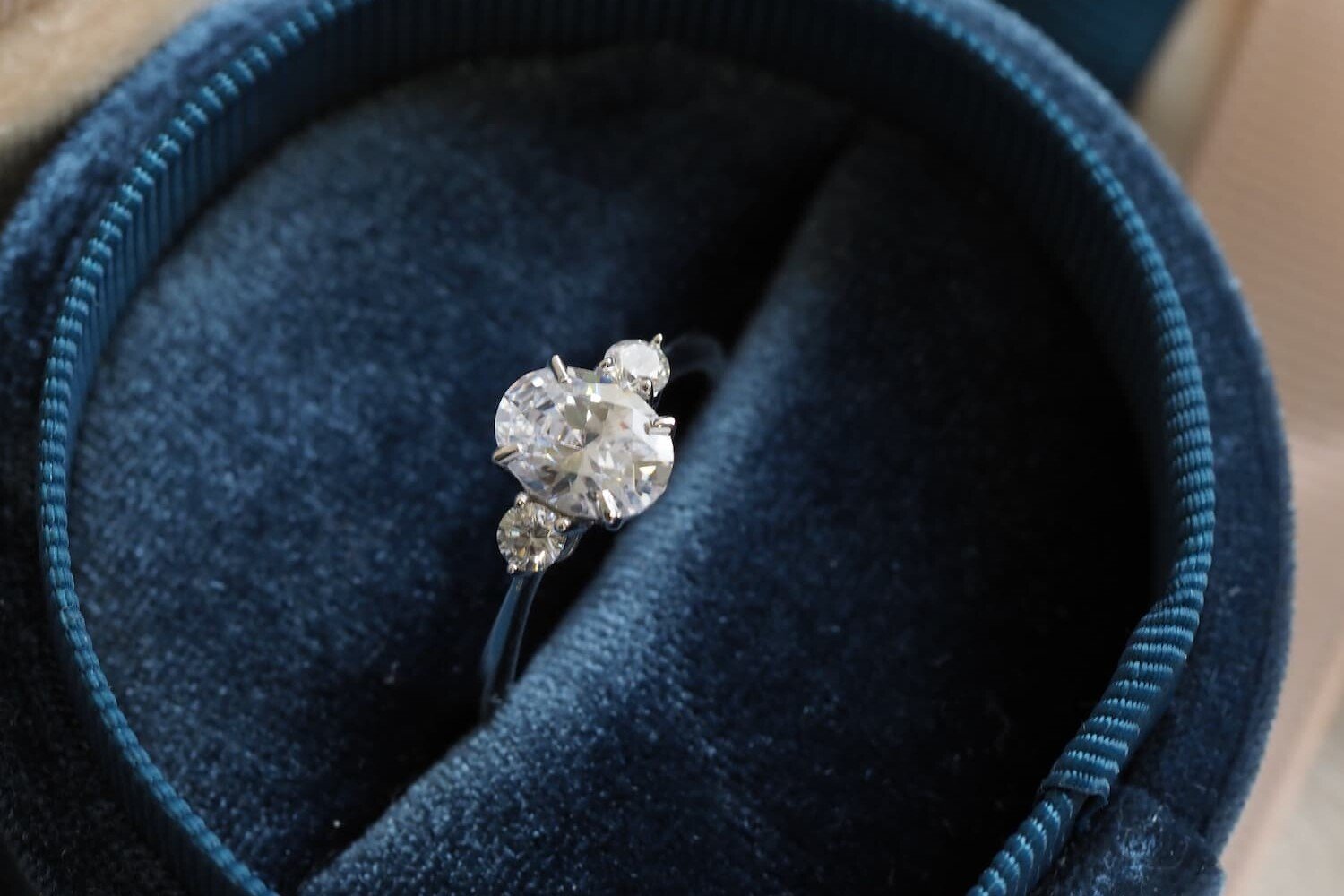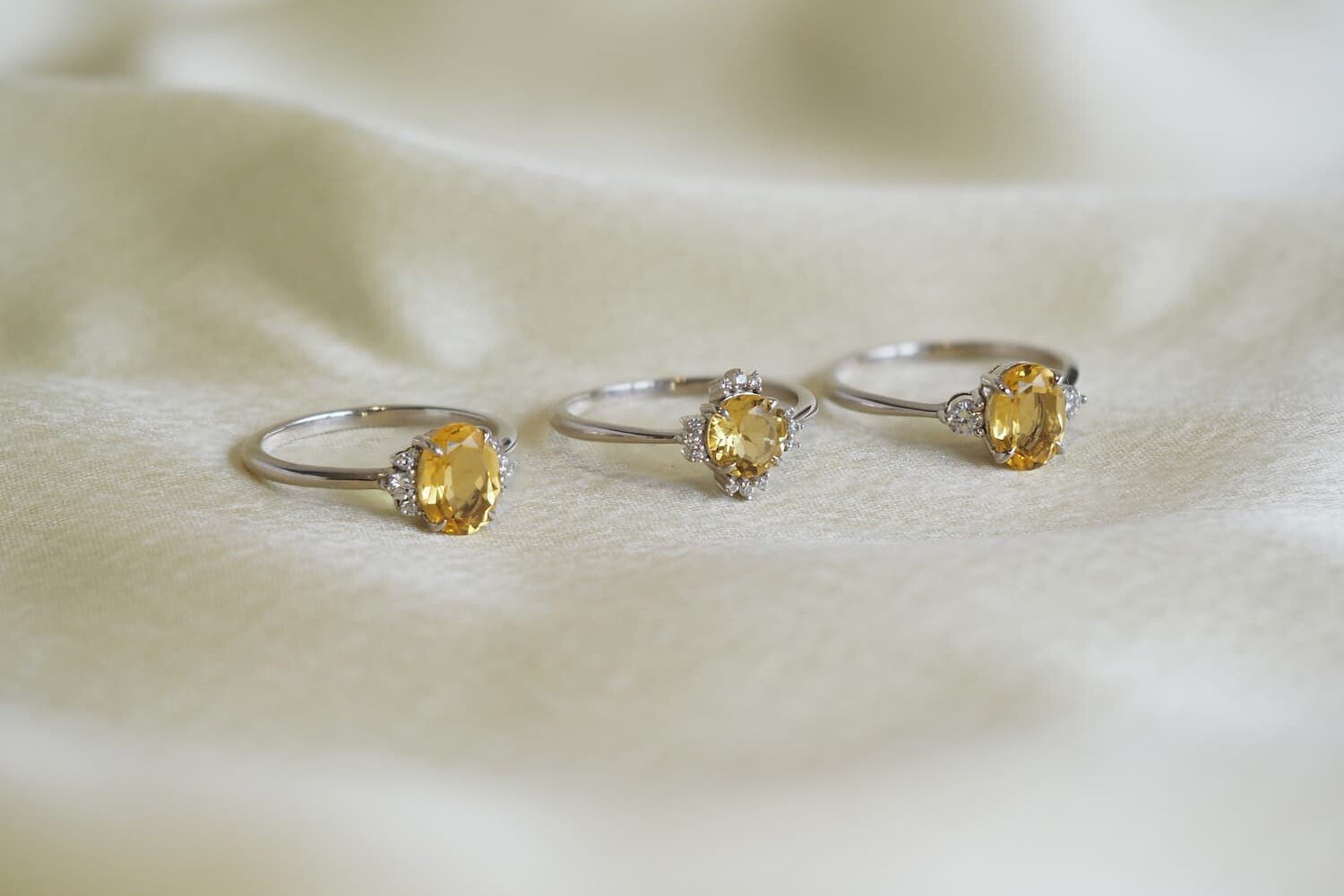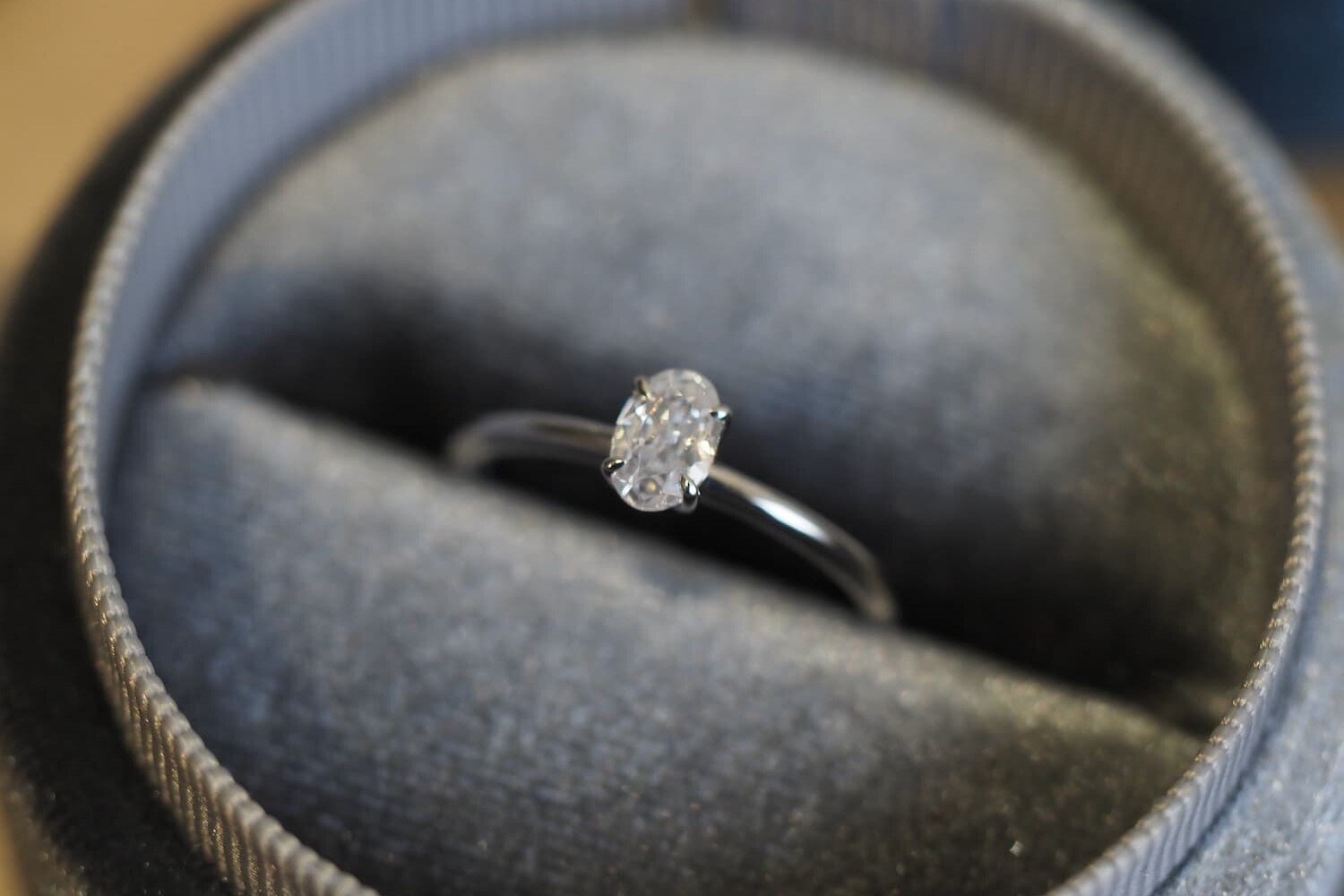It’s the most exclusive, most valuable stone you can buy, and it’s culturally relevant too. A diamond solitaire ring is the norm when it comes to declaring your love, and a look at some of our Diamond Solitaire rings will make you understand why. Frankly, there’s little else in the material world with the brilliance and magnificence of a diamond, and that's why they're used extensively in Solitaire Rings. Without getting too sentimental, we’re here to help you select your perfect diamond solitaire ring. So let’s begin.
Diamonds. Sigh. Where do we even start? The crown jewel of the crown jewels, a diamond is the ultimate gemstone, and the most popular stone when it comes to Engagement Rings, or Solitaire Rings. It’s an exquisite piece of rock, it’s shiny, it’s precious, it’s a colourless piece of wonder. A diamond… is forever. “I’ve graded diamonds my whole life, but the beauty and magnificence of this stone still excites me like little else”, says our resident gemologist Sunil.
It evokes pictures of grandeur, of good times, of kings and queens, of finesse and exclusivity, and of love. While Diamond Ring alternatives have gained popularity over the years, diamonds are still the largest selling gemstone(by volume and in absolute $ terms) in the world. But this is where the paradoxes start.
A fancy shaped diamond can look gorgeous. Couple it with a few bands, and you’ve got a wedding set unlike any other.
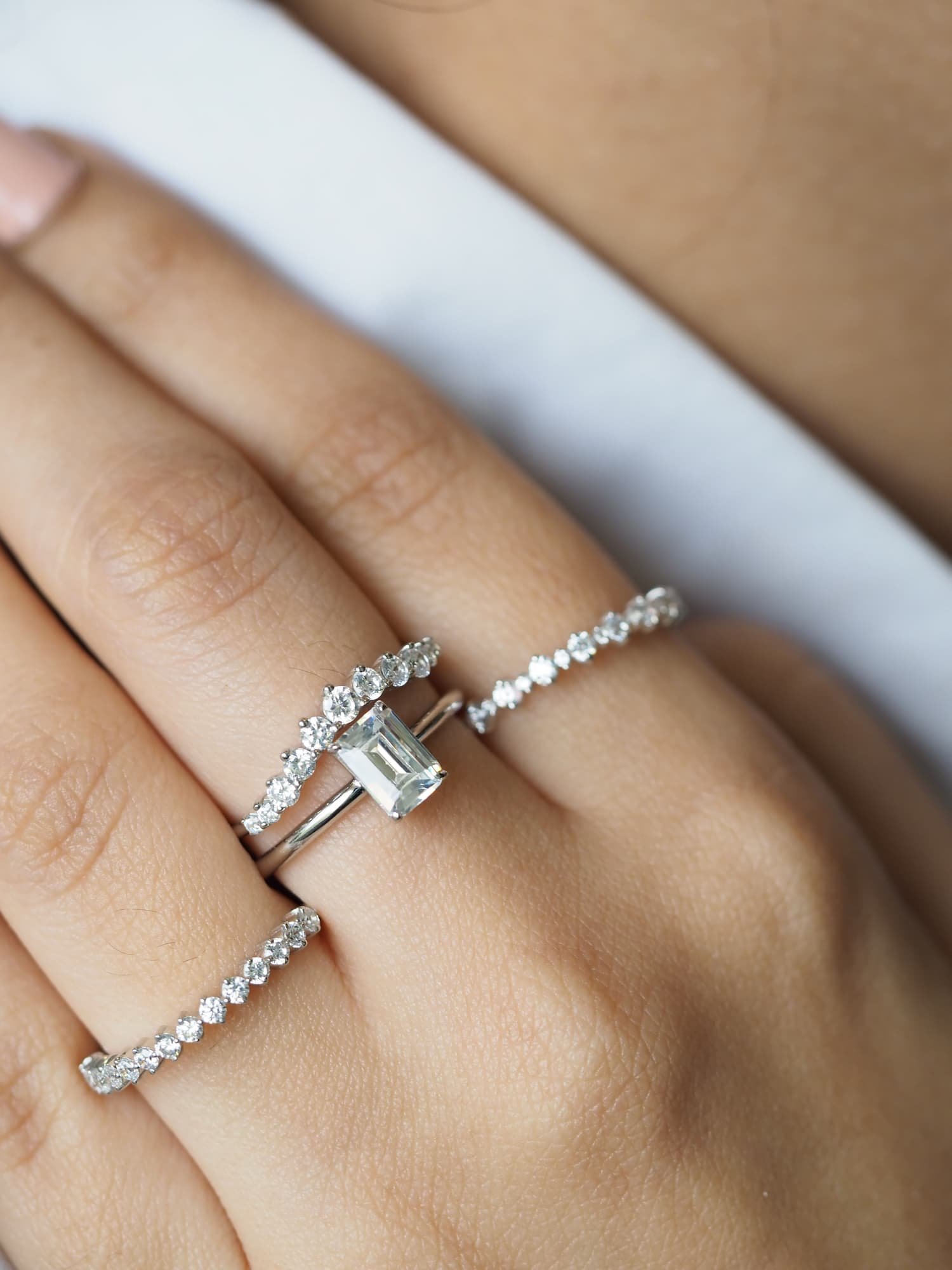
Because it’s the largest selling stone in the world, it’s also the most studied and graded. It’s also ,by a country mile, the most complicated. There are 12 commercially available shades of diamonds, another dozen or so shapes, and 11 different clarities. Not to mention you could have your diamond ring in pretty much an infinite array of sizes. Don’t even get us started on the different grades for cut, and fluorescence and a bunch of other technicalities! Gosh, the number of options are mind boggling!
But at this point, I’m going to take a step back, and request you trust me. I will take you through what you need to know to have a reasonable understanding of what you’re buying into. I’ll explain the design choices we made, and why we made them. At the end, I hope you realise that all you need to do is go through our catalog and pickup the design you like best. We would have taken care of every single technicality for you.
It evokes pictures of grandeur, of good times, of kings and queens, of finesse and exclusivity, and of love.
Diamonds - The hardest substance known to humans
On the Mohs scale of hardness, a diamond is rated at 10. There is no other substance harder than a diamond. It’s 58x harder than any other substance known to man. Let’s understand what this means.
The hardness scale defines scratch resistance. A harder stone can scratch a softer one, not the other way around. Since the diamond is the hardest substance known to us, it’s scratch proof. You can wear it everyday, brush it against surfaces, and it will not show a blemish. Your diamond solitaire ring will look like new forever. The only thing that can scratch a diamond is…well.. you guessed it, a diamond.
Don’t be mistaken though, hardness and strength are two different things. Your diamond is hard, but it’s not the strongest substance around. If you take a hammer to it, your diamond might not scratch, but there’s a chance it will break. So treat it with care.

Why we love this gemstone?
King of Gemstones
You can’t beat the magnificence, charm and brilliance of a diamond.
It’s Primeval
Each diamond is typically about a billion years old, and is a blessing from the earth.
So Simple
Chemically, it’s just pure carbon. The most basic building block. And nothing else.

Choosing the perfect Diamond for your solitaire engagement ring
Okay. So, this is where things start getting complicated. But stay with us. As with any other gemstone that we use in our engagement rings, we go through virtually every option available in the market with a fine attention to detail. We create samples, and see how the stone looks with the design language we’re following. Only after a thorough analysis do we finalise on the kind of stones we want to use. Here’s what we look at while analysing Diamonds (For those of you who’re aware, this is where we talk about the 4C’s – Cut, Clarity, Carat and Colour, among other things):

Clarity:
Laboratories like GIA grade for the size of the inclusion, not the type. So we step in and do the needful. We use diamonds that are graded VS2 and above. In these diamonds, the impurity is small enough that it is invisible to the naked eye. But we go further to inspect it under a 10x scope and choose as far as possible, the pieces that exhibit a watery inclusion, not an opaque one.
Another tactic we employ is to reject, as far as possible, stones with inclusions in the centre of the diamond. Even if invisible to the naked eye, we prefer our diamonds to be clear in the centre. Inclusions if any, are better contained on the side. This also shows that the person who was cutting the diamond had the foresight to plan the inclusion on the side, an area where it’s less noticeable.
In simple terms, we use diamonds that are better than industry standard (VS2). But we go beyond and manually inspect the diamond, so you get the best value when you purchase a diamond solitaire ring from us. If you’d like an upgrade on the diamond clarity, we do offer VVS2 as an option too.

Laboratories like GIA grade for the size of the inclusion, not the type. So we step in and do the needful. We use diamonds that are graded VS2 and above. In these diamonds, the impurity is small enough that it is invisible to the naked eye. But we go further to inspect it under a 10x scope and choose as far as possible, the pieces that exhibit a watery inclusion, not an opaque one.
Another tactic we employ is to reject, as far as possible, stones with inclusions in the centre of the diamond. Even if invisible to the naked eye, we prefer our diamonds to be clear in the centre. Inclusions if any, are better contained on the side. This also shows that the person who was cutting the diamond had the foresight to plan the inclusion on the side, an area where it’s less noticeable.
In simple terms, we use diamonds that are better than industry standard (VS2). But we go beyond and manually inspect the diamond, so you get the best value when you purchase a diamond solitaire ring from us. If you’d like an upgrade on the diamond clarity, we do offer VVS2 as an option too.
Cut:

The diamond’s cut is extremely important. A well cut stone displays better brilliance and whiter colour tones as compared to a stone that’s been cut poorly. The cut of a diamond is largely ignored by most people, but it’s a make or break aspect as far as we’re concerned. So much so that the GIA calls it the diamond’s WOW factor. As we do for our other gemstones, we gladly pay extra to our supply chain to procure an excellently cut diamond.
Colour:

Diamond colours are graded on a scale that starts at D and goes on until Z. Grades D, E and F are considered to be pure white. Grades G & H are considered to be near colourless. A well trained eye can start seeing colour beyond H. And so, all of our diamonds come with H+ colouring. When you order a diamond solitaire ring from us, it will be graded colour H or better.
Carat & Cohesiveness:

Like all of our rings, we pay a lot of attention to every single detail to make sure your diamond solitaire ring is just right. The ring needs to look cohesive as a whole. The elements of the ring should blend well with each other, and not be conflicting. This is where carat comes in. Carat is quite literally a measure of weight. 1 carat = 0.2g. This means, a 1 carat diamond weighs 0.2g. And since size and weight are correlated, a heavier diamond also means a bigger diamond. Our design decisions are generally determined by the size of the diamond, not the weight. But we assure a minimum weight of diamond with each of our solitaire ring designs. More importantly, irrespective of the weight of the diamond, your ring will look cohesive and stunning. That is our promise.
Fluorescence:

Fluorescence is the property of a diamond to shine brightly under UV light. It seems to give the diamond a slightly bluish tinge in certain lighting conditions. You might see your diamond shine bright blue in a club, or areas where dense UV light is present. But the effect of fluorescence is at best negligible in normal lighting conditions. On a normal day, the presence of fluorescence makes no difference to the look of the diamond. In fact, fluorescence can be preferable at times, for example when looking at a diamond with a yellowish tinge and colour grades ranging from I to Z. A strong fluorescence in this case, would make the diamond appear 1 or 2 colour grades whiter in normal sunlight. Since its effect is so minimal, and even preferable at times, we do accept stones graded with medium fluorescence or better.
A well-cut diamond can add lustre, but also make your diamond appear whiter.
Diamond Solitaire Rings - Some Diamonds on the side?
The speciality of a diamond is that it looks absolutely stunning by itself, and also with other diamonds around it added as design accents. We offer our rings in a variety of diamond sizes, and each comes with the option of a cluster of diamonds on the side, so as to enhance the design of the ring.
Where does the Diamond for your ring come from?
The diamonds we use in our jewellery are typically sourced from Canada, Russia or Africa. These places offer some of the best quality Diamonds in the world. While we aren’t particular about where the stone is sourced from among these three locations, we always make sure the stone comes with a certificate or assurance of fair trade. Further, we get each and every stone vetted to make sure of its origins. Every piece of Diamond jewellery you buy from us, that contains a centre stone larger than 0.30 carats, comes with a certificate of authenticity from GIA or IGI.
Champagne Diamond Engagement Rings
As diamond colouring goes beyond Q on the grading scale, it tends to display a strong yellow or brownish pink colour. These diamonds are sometimes called champagne diamonds. We offer champagne diamonds as an option in our Made To Order collection.
Caring for Your Diamond Solitaire Ring
We’d recommend you care for this piece like you would any other piece of jewellery. Take it off before you enter the shower, or go for a swim. Also, keep it away from chemicals and oils. Like any transparent stone, Diamonds may display oiliness over a period of time. This may dim the sparkle of the stone too. But worry not, it’s easy to get rid of the layer of oil on your stone. Simply use a soft tooth brush and some soap water to clean your ring.
Based on the quality, sometimes, a ring with a larger diamond may be less expensive than one with a smaller diamond.
Diamond size for your Solitaire Engagement Ring
We offer a wide range of diamond sizes for your perusal, within our collection. Diamonds larger than 0.30 carats come with a GIA or IGI certificate. When using centre stones, we typically recommend sizes of at least 5mm, so as to maintain the sanctity of the design and make the ring look proportionate.
Diamond Ring Buying Hack: Based on the quality, sometimes, a ring with a larger diamond may be less expensive than one with a smaller diamond. See other hacks here.
Diamond Solitaire Ring - Which shape to choose?
Diamonds are commercially available in any shape or cut you prefer. Round diamonds are a classic. There’s something about the proportions of a round diamond that fits perfectly within a solitaire engagement ring. It goes well with other diamonds, and colour stones too. It lends a certain balance to the entire design.
But diamonds are available in a variety of shapes and cuts. As consumers become more discerning, and search for rarer, more unique options, other cuts have been gaining popularity too. The following shapes are currently trending for use in Solitaire Engagement Rings:
- Oval Cut Diamonds
- Cushion Cut Diamonds
- Emerald Cut Diamonds
- Radiant Cut Diamonds
- Baguette Cut Diamonds
- Rose Cut Diamonds

As far as our collection goes, we presently offer round and Oval cut diamonds in our Ready To Order Collection. These designs are exquisite, and a lot of thought went into them before defining the proportions.
Other cuts and shapes are available too, but only as a Made To Order Piece. This is partly due to availability of pieces, but also because the other shapes require a certain level of personalisation and discussion that is only possible with our Made To Order pieces.
Choose from a wide range of diamond rings from our Made to Order or Ready to Wear collection.
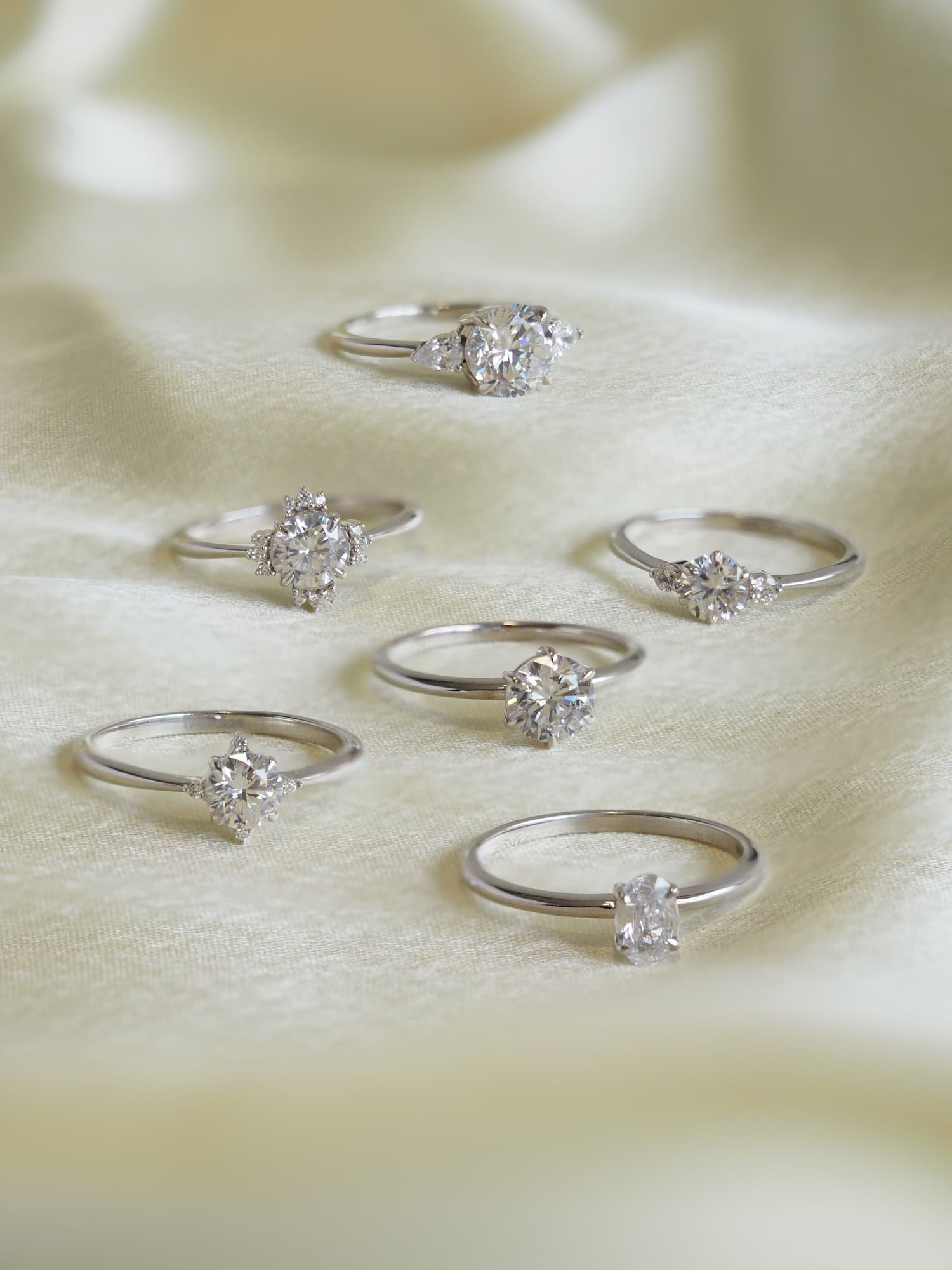
Which gold colour to choose for your Diamond Solitaire Ring?
Unlike other gemstones, we offer our diamond solitaire rings in all 3 variations of solid 18KT gold – white, yellow and rose gold. The inherent white brilliance of a diamond means it looks great with any colour of gold.
Over the last decade or so, white and pink gold have been fairly popular. Yellow gold, once considered to be a traditional choice, is also re-emerging as a classic option.
How much to spend on your Solitaire Ring?
It’ a popular myth that you should spend 3 months’ worth salary on an engagement ring. But frankly, there are no rules at what you “should” be spending. Your budget should depend upon what you’re comfortable shelling out on an engagement ring, and what you want to get made. Here are a few more tips on how to approach your budget decisions.
Where can I buy Diamond Solitaire rings?
We offer a range of amazing designs as part of our Ready to Wear Collection, that look stunning with a centre diamond. These designs are available in white gold, yellow gold and rose gold, and feature both round and oval shapes.
We also offer our bespoke service for other shapes. This service offers a level of personalisation and customisation, and allows you to choose between a number of different shapes.

Charlotte Diamond
₹46,800
Lisa Diamond
₹9,20,700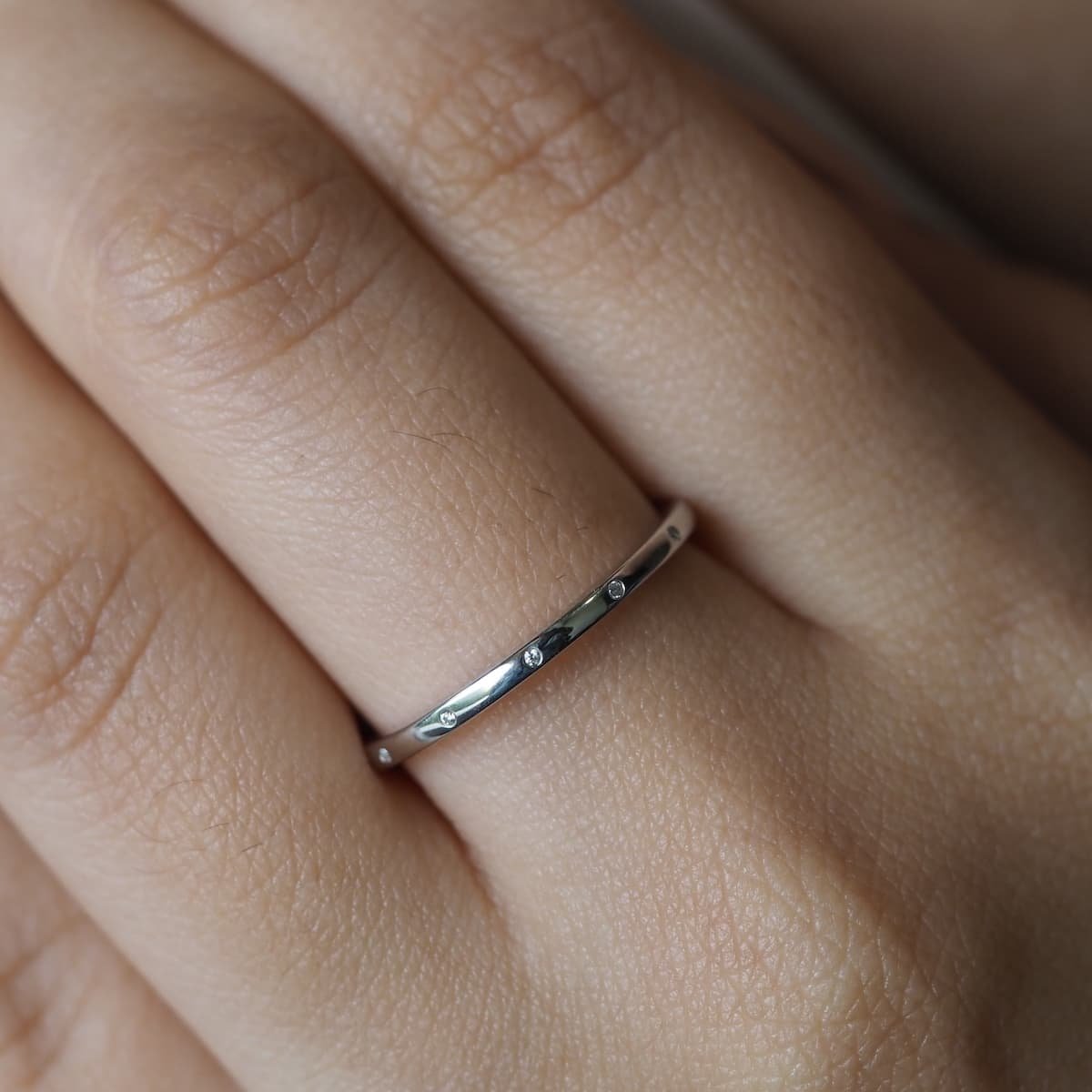
Anna Diamond
₹25,500How do I speak to my partner about the engagement ring?
There are a number of different ideas on how to do this. The simplest way is to speak to your to your partner directly. It’s easier to understand their likes and dislikes, as well as their preferences when it comes to design, colours etc. We’ve written an article to touch upon exactly this – it should give you some ideas. But before you go engagement ring shopping, check out these top tips here at the link.
Diamond Nerd Facts
We love some nerdy facts, and there’s a reason behind it. Gemstones are a work of art, but the science behind them is equally important. One stat that really caught our attention is that diamonds are 58x harder than any other substance known to us. That’s a fairly baffling number! Here are some stats relating to diamonds.
- Mineral: Diamond
- Chemistry: C
- Color: Colorless
- Refractive Index: 2.42
- Specific Gravity: 3.52 (+/-0.01)
- Mohs Hardness: 10
- Birthstone: April
- Anniversary Year: 60th and 75th
Diamond Solitaire Rings - FAQs
Diamonds are the king of the gemstone world. A diamond is pure carbon, and extremely valuable. When cut to perfection, it displays total internal reflection, resulting in a brilliantly lustrous appearance. This is what makes a diamond extremely valuable.
White diamonds are the most common, and the most highly valued. But diamonds are available in other colours too – chocolate brown, pink, yellow are found naturally. Others like blue, green, purple etc. are the result of irradiating a natural white diamond through an artificial process.
Some naturally occurring blue, green diamonds also exist. But they command an extremely high premium.
Diamond is rated 10 on the Mohs scale of hardness. It is the hardest, most scratch resistant substance known to man.
Yes. Gemstones with hardness 7 or more are suitable for everyday use. Since the hardness of a Diamond is 10, it can be used everyday.
A large diamond, generally above 0.3ct in weight, is also called a solitaire.
The two terms are used inter-changeably, and mean the same thing. An engagement ring with a large centre diamond is also called a Solitaire Engagement Ring, or just simply, a Solitaire Ring.
Yes. Diamonds are the norm as far as solitaire engagement rings are concerned. Diamond Solitaire Rings are the most popular type of engagement rings worldwide.
There are outdated thumb rules which say you need to spend 3 months’s salary. Truth be told, it comes down to what you’re comfortable spending. Our clients spend anywhere between ₹60,000 (USD800) to ₹12,00,000 (USD16000) for an engagement ring. The average is about ₹2,20,000.
Diamonds are graded from D to Z on the colour scale – D being white, while Z being coloured. We highly recommend using diamonds graded G or better as far as colour is concerned.
The cut of a diamond defines how much lustre it displays. We recommend using diamonds graded Excellent or Very Good on cut. It will improve the look of your ring considerably.
Diamonds are graded from IF (Internally Flawless) to I3 (Inclusion 3) on the clarity grading scale. We recommend using diamonds graded VS2 or better. All the diamonds we use in our solitaire rings are graded VS2 or better. We also offer an optional upgrade to VVS1 on some of our pieces.
We recommend using diamonds that are at least 0.50 carats as central stones. In a cluster setting, we recommend using one stone that is at least 0.20 carats in weight.
We’d suggest you don’t expose it to harsh chemicals, swimming pools, oils and other chemicals. We’d also recommend taking it off before taking a bath.
Truth be told, we love diamonds will every colour of gold. Each one of those brings out the beauty of a diamond. We love the contrast that yellow and rose gold provide, but white gold is extremely popular too.
Be In The Know
Subscribe to our newsletter

Akshay Sethi
With an eye for detail, Akshay has been designing exquisite pieces of jewellery for years now. He's also our resident gemologist, and the founder at The Peacock.
If you liked this article, share it with someone who might find it valuable too:
Diamond Engagement Ring 4Cs: A Guide To Cut
The quality of a diamond is determined by the 4C’s. An excellent quality diamond can work…
7 Reasons Why Oval Diamond Engagement Rings Are Trending
Oval Diamond Engagement Rings are trending right now. They’re obviously less conventional…
The Simplest Guide: 4Cs of Diamond Engagament Rings
The diamond 4Cs can be fairly confusing. But if you’re making a significant purchase like…
6 Diamond Engagement Ring Alternatives That Will take Your Breath Away
For decades now, diamond engagement rings have ruled the roast as far as engagement rings…
5 Hacks to Save Big On Your Diamond Engagement Ring
So you’ve decided to pop the question to your soul mate. You’ve decided you want to go…
Could An Engagement Ring With A Bigger Diamond Be Less Expensive?
Yes. That’s a short answer to that question. It’s possible that an engagement ring with a…
How To Choose The Perfect Diamond For Your Engagement Ring
Everyone talks about the diamond 4Cs like they are child’s play. No they’re not. It’s an…
The Carat Size Of Your Diamond Engagement Ring – Diamond 4Cs
The diamond 4Cs are the holy grail of your diamond engagement ring. An excellent quality…
The Clarity Of Your Diamond Engagement Ring: Diamond 4Cs
The Diamond 4Cs can be complicated to understand. But put together, they have the power…
